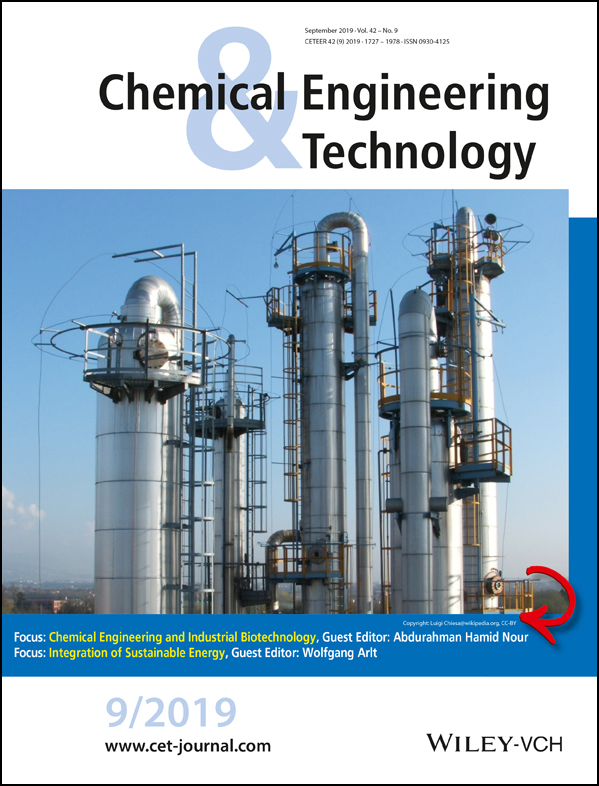Life Cycle Optimization for Synthetic Rubber Glove Manufacturing
Gary K. X. Poh
UCSI University, Faculty of Engineering, Technology and Built Environment, No. 1, Jalan Menara Gading, UCSI Heights, 56000 Cheras, Kuala Lumpur, Malaysia
Search for more papers by this authorIrene M. L. Chew
Monash University Malaysia, School of Engineering, Jalan Lagoon Selatan, 47500 Bandar Sunway, Selangor, Malaysia
Search for more papers by this authorCorresponding Author
Jully Tan
Monash University Malaysia, School of Engineering, Jalan Lagoon Selatan, 47500 Bandar Sunway, Selangor, Malaysia
Correspondence: Jully Tan ([email protected]), Monash University Malaysia, School of Engineering, Jalan Lagoon Selatan, 47500 Bandar Sunway, Selangor, Malaysia.Search for more papers by this authorGary K. X. Poh
UCSI University, Faculty of Engineering, Technology and Built Environment, No. 1, Jalan Menara Gading, UCSI Heights, 56000 Cheras, Kuala Lumpur, Malaysia
Search for more papers by this authorIrene M. L. Chew
Monash University Malaysia, School of Engineering, Jalan Lagoon Selatan, 47500 Bandar Sunway, Selangor, Malaysia
Search for more papers by this authorCorresponding Author
Jully Tan
Monash University Malaysia, School of Engineering, Jalan Lagoon Selatan, 47500 Bandar Sunway, Selangor, Malaysia
Correspondence: Jully Tan ([email protected]), Monash University Malaysia, School of Engineering, Jalan Lagoon Selatan, 47500 Bandar Sunway, Selangor, Malaysia.Search for more papers by this authorAbstract
Production of synthetic gloves may cause adverse environmental impacts, including global warming, carbon footprint, acidification, photochemical ozone formation, eutrophication, human toxicity, and water footprint. Thus, life cycle assessment is applied as an environmental management tool to evaluate its environmental impacts. Life cycle optimization is implemented to minimize energy consumption and emission of greenhouse gases by proposing five alternative process improvement scenarios. Using electricity generated from biodiesel shows the least environmental impacts as compared to the other alternatives for the production of synthetic gloves. Future economic analysis is needed to evaluate the cost feasibility of these alternatives.
Supporting Information
| Filename | Description |
|---|---|
| ceat201800476-sup-0001-misc_information.pdf165.7 KB | Supplementary Information |
Please note: The publisher is not responsible for the content or functionality of any supporting information supplied by the authors. Any queries (other than missing content) should be directed to the corresponding author for the article.
References
- 1www.gminsights.com/toc/detail/industrial-safety-gloves-market (Accessed on July 13, 2017)
- 2www.lgm.gov.my/nrstat/nrstats2017_(Jan-Dec)_ppword.pdf (Accessed on February 1, 2018)
- 3www.fmm.org.my/upload/Country_Report_for_Petrochemical-Synthethic_Rubber.pdf (Accessed on February 1, 2018)
- 4 K. F. Gazeley, A. D. T. Gorton, T. D. Pendle, Natural Rubber Science and Technology (Ed.: A. D. Roberts), Oxford University Press, Oxford 1988.
- 5 W. Jawjit, C. Kroeze, S. Rattanapan, J. Cleaner Prod. 2010, 18 (5), 403–411. DOI: https://doi.org/10.1016/j.jclepro.2009.12.003
- 6 K. Bekele, M. Sc. Thesis, Addis Ababa University 2007.
- 7 P. Tekasakul, S. Tekasakul, J. Aerosol. Jpn. 2006, 21 (2), 122–129. DOI: https://doi.org/10.11203/jar.21.122
- 8 S. Yari, A. Fallah Asadi, S. Varmazyar, Asian Pac. J. Cancer Prev. 2016, 17, 205–211. DOI: https://doi.org/10.7314/APJCP.2016.17
- 9ISO 14040. Environmental Management – Life Cycle Assessment – Principles and framework (ISO 14040: 2006), CEN (European Committee for Standardization), Brussels 2006.
- 10
J. Guinée, Handbook on Life Cycle Assessment – Operational Guide to the ISO Standards, Springer, Amsterdam
2001.
10.1007/BF02978784 Google Scholar
- 11 A. Azapagic, R. Clift, Int. J. LCA 1998, 3, 305–316. DOI: https://doi.org/10.1007/BF02979340
- 12 A. Azapagic, R. Clift, Int. J. LCA 1999, 4, 133–142. DOI: https://doi.org/10.1007/BF02979447
- 13 E. Zschieschang, P. Pfeifer, L. Schebek, Chem. Eng. Technol. 2013, 36 (6), 911–920. DOI: https://doi.org/10.1002/ceat.201200635
- 14 J. Tan, R. R. Tan, K. B. Aviso, M. A. B. Promentilla, N. M. N. Sulaiman, Clean Technol. Environ. Policy 2017, 1–14. DOI: https://doi.org/10.1007/s10098-017-1390-5
- 15 M. Zeymer, K. Meisel, A. Clemens, M. Klemm, Chem. Eng. Technol. 2017, 40 (2), 260–269. DOI: https://doi.org/10.1002/ceat.201600233
- 16 Z. Wahid, Ph. D. Thesis, University of Newcastle 1998.
- 17 R. Heijungs, S. Suh, The Computational Structure of Life Cycle Assessment, Springer, Amsterdam 2003.
- 18SuperPro Designer®, User's guide, Intelligen Inc., USA 2016.
- 19www.eiolca.net/ (Accessed on February 1, 2018)
- 20www.st.gov.my/ (Accessed on February 1, 2018)
- 21 E. Furuholt, Resour. Conserv. Recycl. 1995, 14 (3–4), 251–263. DOI: https://doi.org/10.1016/0921-3449(95)00020-J
- 22www.agnatural.pt/documentos/ver/natural-gas-conversionguide_cb4f0ccd80ccaf88ca5ec336a38600867db5aaf1.pdf (Accessed on February 1, 2018)
- 23 J. Buchgeister, Chem. Eng. Technol. 2010, 33 (4), 593–602. DOI: https://doi.org/10.1002/ceat.201000006
- 24www.mpoweruk.com/steam_turbines.htm (Accessed on February 1, 2018)
- 25www.yumpu.com/en/document/view/30001695/1-fuels-and-combustion-bureau-of-energy-efficiency (Accessed on February 1, 2018)
- 26www.christopherteh.com/blog/2012/05/solar-malaysia/ (Accessed on February 1, 2018)
- 27 Plant Design and Economics for Chemical Engineers (Eds.: M. S. Peters, K. D. Timmerhaus, R. E. West, K. Timmerhaus, R. West), McGraw-Hill, New York 1968.
- 28 S. Pleanjai, S. H. Gheewala, S. Garivait, in JGSEE, Asian J. Energy Environ. 2007, 15–32.
- 29 C. K. Kuan, D. C. Y. Foo, R. R. Tan, S. Kumaresan, R. A. Aziz, Clean Technol. Environ. Policy 2007, 9 (3), 225–234. DOI: https://doi.org/10.1007/s10098-007-0088-5
- 30www.iea-pvps.org/fileadmin/dam/public/report/technical/IEA-PVPS_Task_12_LCI_LCA.pdf (Accessed on July 22, 2017)
- 31 R. Sinnott, G. Towler, Chemical Engineering Design, 5th ed., Butterworth-Heinemann, Oxford 2009.
- 32 W. Jawjit, P. Pavasant, C. Kroeze, J. Cleaner Prod. 2015, 98, 84–91. DOI: https://doi.org/10.1016/j.jclepro.2013.11.016




